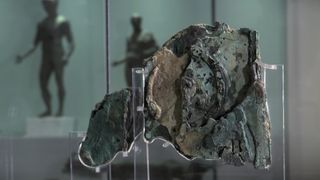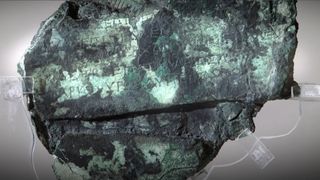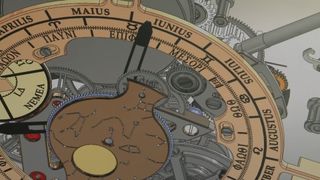PC Gamer is supported by its audience. When you buy through links on our site, we may earn an affiliate commission. Learn more
By published
Though the calibration date for the Antikythera mechanism is still a little hazy.
Built some time between 200 BC and 60 BC, the Antikythera mechanism is the oldest known computer mechanism in existence. This ancient, geared device for tracking the heavens is in pretty bad shape after all that time.
But, despite the rust, researchers may have finally revealed a possible date it was first set ticking—also known as «Day Zero.»
The mechanism is actually a hand-wound clock, used to calculate the sun, moon and planets’ movements, and to predict eclipses. It was discovered over a century ago in a shipwreck, says NewScientist (opens in new tab), after a gale blew divers off-course to the barren islet of Antikythera—hence the name.
Since then, the mechanism has made waves in our understanding of how technologically advanced the ancient Greeks were. It’s proven that their technical ability was far beyond what we initially thought. Archimedes himself may have even had a hand in the original design of mechanisms like this one, since it has links to his home city of Syracuse.
Mathias Buttet, Director of Research and Development at Hublot, who helped recreate a wearable version of the mechanism (opens in new tab) says the «Antikythera mechanism includes ingenious features which are not found in modern watchmaking.» That all points to the ancient Greeks having been better at measuring time than we ever imagined.
But as with any mechanism that measures, calibrations are needed. For a clock like this the calibrations would require a start date to ensure the device’s accuracy.



Aristeidis Voulgaris of the Thessaloniki Directorate of Culture and Tourism in Greece now supposes the calibration date was around 23 December 178 BC, backing it up with the fact that a bunch of other culturally important astronomical events happened simultaneously right just then. The winter solstice is one event that helped push the team toward their conclusion, particularly as the mechanism’s inscription mentions it specifically.
Best PC fans (opens in new tab): super-silent and plastered in RGB
Best PC cases (opens in new tab): big, little, and everything in-between.
Four independent calculations have been made by other researchers, which place the device’s calibration closer to 204 BC, however. These calculations relied on the period where the mechanism’s astronomical predictions were most accurate, but place the date in the summer. That potential has researchers scratching their heads over the prominence of the device’s winter solstice inscription.
Looks like there’s still a way to go before researchers agree on a day zero for the Antikythera mechanism, then. Still, it’s good to know this ancient precursor to modern tech isn’t being forgotten about, even after all these years.
Screw sports, Katie would rather watch Intel, AMD and Nvidia go at it. She can often be found admiring AI advancements, sighing over semiconductors, or gawping at the latest GPU upgrades. She’s been obsessed with computers and graphics since she was small, and took Game Art and Design up to Masters level at uni. Her thirst for absurd Raspberry Pi projects will never be sated, and she will stop at nothing to spread internet safety awareness—down with the hackers.
Sign up to get the best content of the week, and great gaming deals, as picked by the editors.
Thank you for signing up to PC Gamer. You will receive a verification email shortly.
There was a problem. Please refresh the page and try again.
PC Gamer is part of Future US Inc, an international media group and leading digital publisher. Visit our corporate site (opens in new tab).
© Future US, Inc. Full 7th Floor, 130 West 42nd Street, New York, NY 10036.












